Ever taken a photo of a beautiful night scene, only to go home and realize it looks too dark, and nothing like it did in real life?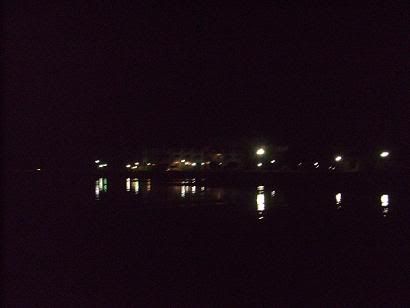
How about trying to take a photo of something out in nature; possibly a majestic tree covered in snow, again to find out it represents an unclear image?
Or how about taking photos of friends indoors, only to have their faces totally ghosted out?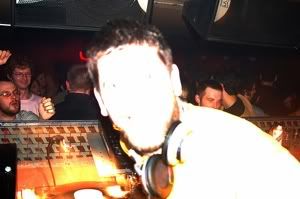
Interest in photography has blown up over the past decade, mainly due to the accessibility of equipment in mobile phones and digital cameras, as well as ease of use, and the ability to have your photos right then and there (rather than having to finish up a roll of film, then taking it to get processed). Ease of sharing your photos has also made photography more attractive, through sites like flickr, facebook, and so on.
However, just the fact that you can take a photo doesn't always mean you can take a good one. I'll be posting a mini-series here covering the basics of photography, different types of cameras and functions, and how you can improve your shots overall.
Before going into the details of light, exposure, aperture and so on, you need to build a simple eye for photography. Anybody can point a camera and shoot, and even if you have thousands of dollars of advanced equipment, without being able to structure/compose a photo in the right way, your photos still won't look great.
Let's take an example: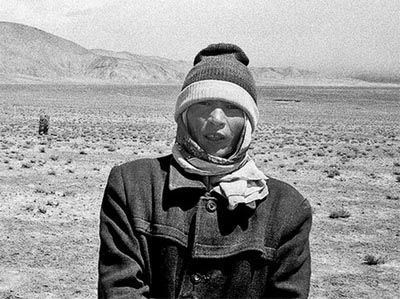
A good shot here, showing the detail of the person and his full expression, but overshadowing the background. Most people tend to center the subject into the photo; ie, the man here is placed in the center. What this does, however, is cover up anything going on behind him. In this shot, the view can play a strong part in the photo, so instead of centering the subject, we could try placing them closer to the corner. Also, moving back to take in more of the scene can also help:
Here we get a better feel for the location, and the feel of the area. Of course, composing your shot would depend on what you wanted to achieve; the first photo could be considered better if we wanted to focus on the detail of the clothes, or facial expression, and didn't really care about capturing the background scene.
Another tip when composing a shot; when you're trying to take a photo of something, you focus on it and don't naturally notice the surroundings. Stop before taking the shot, and look around for a few seconds; is there anything that might obstruct the view a little, that you can remove from the picture by stepping to the side or going in closer, perhaps? Many shots taken have noisy lamp posts, electric wires (especially in scenic shots), and so on. You don't always notice them when taking the photo, but get disappointed later on when you download/develop your photos:
It seems a little obvious, but you would be suprised as to how many people make this mistake. As well as avoiding noisy objects in your photo, moving closer or further away from the object (or zooming in or out) to create a good boundary always makes for a better shot. The above photo, for example, is supposed to focus on the monument, and display the greenery behind it. Unfortunately, the edges of the photo display a drain cover, the side road, a lampost, some houses, and so on, distracting from the main subject. A few steps closer to the object, and a better result is achieved:
It might sound like common sense, and it is. However, many people don't take the time to consider the way their final photo will look, and therefore you end up with a lot of photos that distract from the main subject, don't display what you might want them to display, or perhaps need a bit of editing to actually look good.
Shooting vertical or horizontal is also another aspect; with a tall building, for example, natural instinct would be to use to turn the camera and take a vertical shot. However, perhaps a horizontal shot would get more of the surrounding scenery, or give a fuller view, achieving a better effect? 

Of course, all of the above tips depend on you. What do you want to do with the photo? What are you trying to emphasize on? Sometimes, a background would make a photograph look better. In other situations, it might distract from the subject. You can move around or work with different angles besides the ordinary to come up with interesting shots:
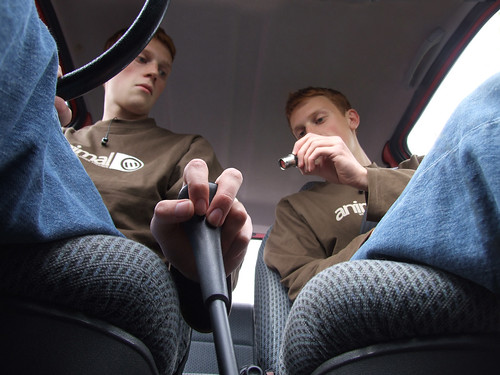
Before taking a shot, stop for a few seconds, and visualize how it might look. Look through your viewfinder, look at the details and image you're capturing. Maybe it would look better if you took two steps to the left? Or if you found another angle to shoot from? Instead of just pointing and shooting, try to think about your photos; you could come up with many more memborable ones. In the end, just remember, there is no right or wrong when it comes to photography; how a good photo look in the end will depend on you.
I hope this gives you a better idea of how to frame and compose your photos in general. There are many more ideas for structuring photos, so go out there and practice a bunch till you get something you're happy with. This was a very basic introduction, but next, i'll go over the concepts of light and exposure, and how it affects your photos.
Part 2
9 December 2007
Beginners Guide to Photography; Part 1
Subscribe to:
Post Comments (Atom)

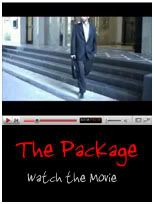


8 comments:
WOW i need to learn my friend , just let me be heaty again! thank you for your support amaro :)
i want to read but am too sleeepy! but i had to comment cuz i loved some of the shots :P the bahraini pics are urs? sorry i didnt read >< inshalla bacher as soon as i wake up
having a digital camera tought me a lot about photography just via trial and error since i can instantly view the pic, delete in, and try again using a different setting or angle. People avoid asking me to the pics now, LOL
Nice one...I need to print out this e-mail and try with different angles..My cousins think I am really into photography :)
I Dont know why yo deleted the toilet meeting ! it was ROFLMAO ! its ok to be funny !
I love taking pics but they never look as good as the real thing...I just bought a nifty Sony cybershot...it has everything to turn me into a real live photographer...if only i would read the book...lol.
Good man! If you want I can give you links to helpful tutorials on deviantART
dynamite; sure! just stay tuned, i have a few more guides that should help
desert; yes they are, but i took them very quickly just for the guide. if you want to see some of my other pix, click on the flickr link on the side bar
asoom; yeah, its made things so much easier! good luck :)
fast; i love taking photos. keep reading for the next few guides
grey: huh?
coolred; sonys are great. i had a cybershot before my canon; takes some excellent pics. if you dont want to read the book, just keep reading these guides :p
kj; sure, why not? :) thanks
Post a Comment